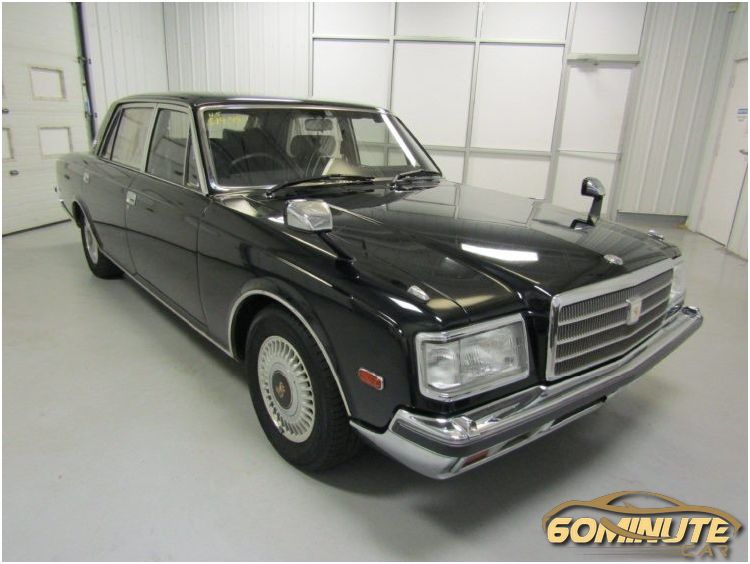Tesla is NOT the first Electric Car
There is a sudden and renewed interest in electric vehicles, largely spurred on by the enormous success of Tesla Motors in promoting and marketing their vehicles – and no doubt by the enormous amount of media and corporate hype that is generated for Tesla Motors and electric vehicles. In the United States and European markets, gasoline engine vehicle sales are beginning to plateau while charging stations for electric automobiles and their rechargeable batteries spring up across the nation. Anywhere that they can’t sell a full electric automobile, hybrid cars are being pushed to reap the tax incentives. These plug in hybrid cars solve none of the issues of a gasoline engine, and only offer a half step to a full electric motor at the expense of vehicle performance and top speed.
But this technology is nothing new!
Electric Vehicles have been around far longer than Tesla Motors has had them in production. Most readers and viewers have likely heard of earlier modern attempts such as the Nissan Leaf, or other plug in hybrid attempts. Vehicle enthusiasts may already know of the lead acid battery being a long standing and mature technology used in the production of electric vehicles (before the introduction of modern technology like the lithium ion battery). Yet the story goes back even further, right to the very beginnings of transport! The electric carriage was a thing. Yes, you heard that correctly: Back when vehicles were still called carriages, there were already fully electric automobiles. Inventor Robert Anderson had a production ready electric carriage and rail-cars back in the early 1800s! Ferdinand Porsche had a working hybrid vehicle back in the early 1900s! Most incredibly, these electric and hybrid vehicles didn’t even require as much laborious winding of a hand crank to start the gasoline engine, something that even the famous Henry Ford Model-T used! (The hand crank is conveniently left out of the history books and period pieces, and the Henry Ford Model T is made to feel similar to modern gasoline vehicles, downplaying the comparative benefits that the electric carriage had at the time).
So with electric vehicles invented long ago, and now proving to be capable of faster acceleration and soon even a higher top speed than the gasoline engine, how did we end up with decades of the United States (and global) vehicle industry being dominated by high emissions vehicles? Why were the electric motor, lead acid battery and lithium ion battery tech, rechargeable batteries, and inventors like Robert Anderson and Ferdinand Porsche sidelined in favor of the Henry Ford and the gasoline engine?
There are a plethora of documentaries coming out now to fill you in on the decline of the electric car industry, and the nefarious moves made by the large corporations with controlling interests in gasoline engines, highways, cities, industry etc to crush the electric car. Subscribe to the channel and watch some videos so that I can give you a good summary and recommend further watching and videos. It is truly a mind opening topic to broach, I hope you let me help educate you about it so that you can share these videos with others to show the shady operations of both large corporations and car dealerships. For now, please see this brief summary on the history of electric vehicles – it will amaze you how far along in their development we have been for over a century!
Unsurprisingly, there were multiple early inventors who sought to use the electric motor for transportation. In the early 1800s multiple inventors made use of non-rechargeable batteries to power their small scale electric cars. The idea was further improved for locomotives, with Robert Davidson building an electric locomotive which hauled 6 tons of cargo a distance of one and a half miles at a steep of four miles per hour. In a strangely predictive moment, railway workers destroyed this invention as they deemed it a threat to their employment! In the same era, Robert Anderson also invented his first crude electric carriage, with patents to use rail lines to power such vehicles being granted throughout England and the United States in the 1940s.
The capability to recharge the batteries for a electric vehicles came in 1859, when physicist Gaston Plante invented the lead acid battery. Improvements to lead acid battery technology continuously increased the capacity of the rechargeable batteries, to the point where they could be mass produced for use. The first proper testing of a human carrying electric vehicle occurred in 1881 along the streets of Paris, and the technology continued to see more development, use, and patenting for the coming decades. These electric carriages were seen often in coal mine transport, reaching a top speed of 66 miles per hour. In the United States, William Morrison developed a six passenger electric carriage with a top speed of 14 miles per hour – This invention came in 1890, meaning that the United States was a full 15 years behind Europe in electric vehicles innovation.
The adoption of electric motor technology for electric automobiles and electric carriages entered a golden age in the early 1900s across the United States and Europe. The electric vehicles had the benefits of a gasoline engine without the requirement to start with a hand crank, none of the vibration, no smell, little noise, and no gear changes! Since there were no charging stations at the time for rechargeable batteries, an infrastructure had developed for exchanging lead acid batteries when consumers were away from their increasingly electrified homes.
This success was short lived: Worldwide discoveries of petroleum reserves made gasoline far more affordable, and gave massive incentive for petrochemical companies to have consumers begin using as much gasoline product as possible. Road networks became vast, making the longer range and cheaper gas cost of the gasoline engine more viable. The mass production of the Model T by Henry Ford made the gasoline engine significantly cheaper for consumers than electric.
Since this era, the electric motor had a major decline in sales and research. With large petrochemical and vehicle manufacturing corporations taking the steering wheel of the industry towards whatever produced the most profit, electric vehicles would not see a resurgence until the 1960s and 1970s when consumers and lawmakers in the western United States began to demand more environmentally friendly vehicles and public transportation. The California market, one of the most lucrative in the United States, began pushing for more efficient low emissions vehicles to improve air quality and move towards a zero-emissions model. Large automakers complied with the legislation by creating vehicles, but destroyed unsold vehicles (an unprecedented move) and sued the California Air Resources Board to have their mandates effectively neutered. Electric vehicles were even repossessed in order to be destroyed!
This history is indeed disgusting and shocking, but I have spent a lot of time in the vehicle industry and want to make sure people like you are aware of what has happened and do not fall victim to the industry. Please watch the full video for my in depth explanation, and check out my channel for more exposure about how the auto industry and dealerships function.
Hey, my name is Dan. I used to work for the biggest dealership in the country and now I teach fine folks like you how not to get f•••ed when buying their car. Now in this video, I want to talk about just that. When you’re going to be going out and buying a new car, I thought of buy an electric car might cross your mind. And the eager salesman dressed in old green and smelling really, really delicious. A fresh cut grass. We’ll try to convince you that Tesla, Nissan Leaf or God forbid, maybe some other cancerous PSA s••• on wheels is the way to go. Let’s clear it up. I want to make sure you understand that when you are trying to be sold a useless bulls••• electric car, it’s not the best way to go. Really, it isn’t. Let me show you some facts, some science, some numbers, and then they’ll show you some more cool stuff in a couple of minutes. Let’s go over the boring facts first. Number one, production of electric cars makes thirty six percent more CO2 than production of regular car. Think about that. If you’re going to be buying a brand new electric cars. It’s your fault that there’s going to be more CO2 produced literally because it’s 36 percent more. That’s a s••• ton. That’s a s••• ton. Tesla will tell you that. That’s for God damn sure. But we’re not done just yet. Number two, the difference between Tesla, for example, and a similar four door sedan of the output of the CO2 throughout its life. The amount of energy that is going to use production of it and scrapping the vehicle because we’re trying to be green. We’re trying to recycle cars. Right. We’re not just trying to have cars rotting and polluting, you know, environment by rotting in the field. We’re trying to recycle cars. So once you include everything about the car, the difference is only five tons. Do you know how much it costs to reduce one tonne of CO2? Seven dollars. Seven dollars? Seven f•••ing dollars. So if you’re trying to reduce CO2, buying a Tesla or other electric cars is not the way out.
Pay thirty five dollars to reduce the CO2. That’s it. It’s thirty five dollars. Why would you spend 30, 40, 50, 60, 70, 80, 90 thousand dollars to reduce CO2 by only five tons? When in reality you can reduce that CO2 for thirty five dollars. Come on.
Why would you do that? You know what? That’s boring. Facts are boring. But I’ll give you another fact. And then we’ll jump to fun stuff. Fact number three. Do you know what electric cars are powered by? No, not electricity. Coal. They get powered by coal. Here is the study that was made by National Academy of Sciences. You know the nerds. If their source of electricity comes from coal. Electric cars produce three point six times more smog that kills people. So here’s here’s a boring car right there, just the regular Honda Accord. And then there is a Tesla. The really cool Tesla. You know who is going to kill more people? Tesla. The cool kid on the block is going to kill three point six times more people than the old boring Accord or a Mazda 6 or a shave or a Ford or whatever you want to think of. Yeah. Tesla is going to kill more people. But let’s get over the facts. They’re just facts. Whatever. They’re boring. They’re not important. Let’s jump over to some really cool stuff. If you think that multi billion dollar corporation has your interest in their mind over them making money, well, maybe then this list of companies that helped Nazi Germany in 1940s in World War 2 to kill s••• on Americans, Jews, blacks and half a f•••ing Europe.
Maybe they will help you change their mind. These companies helped Germany instead of stopping them. Chase National Bank. You know those guys? IBM. You bought their computer probably at some point. Brown Brothers Harriman. Yep. That’s the President Bush. They pay well. So why not work with them? Good job, Bush. Dow Chemical Company. Hugo Boss. Clothing. Yep. Those guys. Coca Cola. NestlĂ©. The Chocolate Guy’s Standard Oil. Kodak. Bears. Yes. The Aspirin Company. General Motors. Ford. BMW. Audi. Mercedes. Porsche. Volkswagen. I hope they can change your mind. These companies said to Nazis set to Hitler. Hey, buddy, what can we do to help you kill a s••• ton of people? Would you like us to develop some tanks, some trucks? Would you like us to into some chemical seeking gas? Bunch of motherf•••ers. We’ll be more than happy to. Would you like us to give you food, clothes, your army? Because we’ll be more than happy to. Wherever there is money, there is f•••ing evil. That’s the bottom line. If you think that multi billion dollar corporations have your best interests and care about the environment are you must be on meth. You gotta be on crack. You gotta be on f•••ing something. Check this out. You know what this is? These are smashed and crushed electric cars from over 20 years ago from General Motors, Toyota and Honda over 20 years ago.
They made excellent electric cars. But you don’t know about that. People were sold these cars. There is a s••• ton of them. There was a bunch of them. People lined up for f•••ing miles to buy these cars. Just like with Tesla. You know what they did? They crushed them. They took those cars from people. And if people did not want to give up their cars, they were going to be getting in jail. They were literally going to get sued and possibly put in jail. So do you want to keep the electric car or do you want to go to jail? So most people gave up the cars. There was very, very, very few people that had the f•••ing balls to hide those cars and they couldn’t drive them. They literally hid them and then they still had to give them up or they would go to jail. Honda, Toyota, General Motors threatened people. If you don’t give up these electric cars that you bought. You’re going to go to jail, watch a movie called Who Killed the Electric Car, literally. That s••• is f•••ed up if you’re going out to buy a Tesla or buying an electric car. Watch movie. Who killed the electric car? Maybe that s••• will change your f•••ing mind. But we’re not done just yet. Honda. Toyota.
Tesla. I have something for you. Mercedes, BMW, Audi, I haven’t forgot about you. Check this out. Typically, I’m stocked up, but I only had 10 boxes. I was running short, so I got myself some fresh.
Oh, these guys are awesome. They’re awesome here. Are you watching this Honda? There you go. Toyota. There you go. Shady. There you go. Twenty years ago, you told us to go f••• ourselves. Why do you think these companies are making electric cars all of a sudden? Because there’s hundreds of millions of dollars worth of tax incentives and tax cuts that they’re not going to pay. That’s why.
Because for every electric car that somebody buys, these companies get seven and a half thousand dollars worth of taxpayers money. Your money goes to those companies. And that’s why they’re making these cars, share this video wherever you can. I hope somebody can see it, especially with Tesla fanboys. I’d love to see their faces when they watch this video. Hey, if you enjoyed this video, give me a thumbs up below and lick the subscribe button over my head or watch one of those two videos if you want to see more money saving tips about cars. This is Dan with 60 minute car. I’m signing out and I’ll see you on the Internet.





